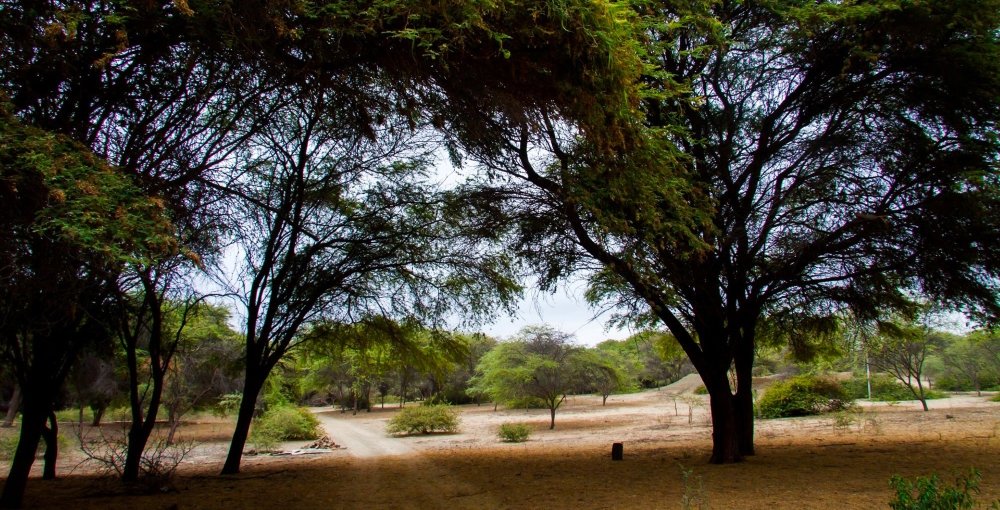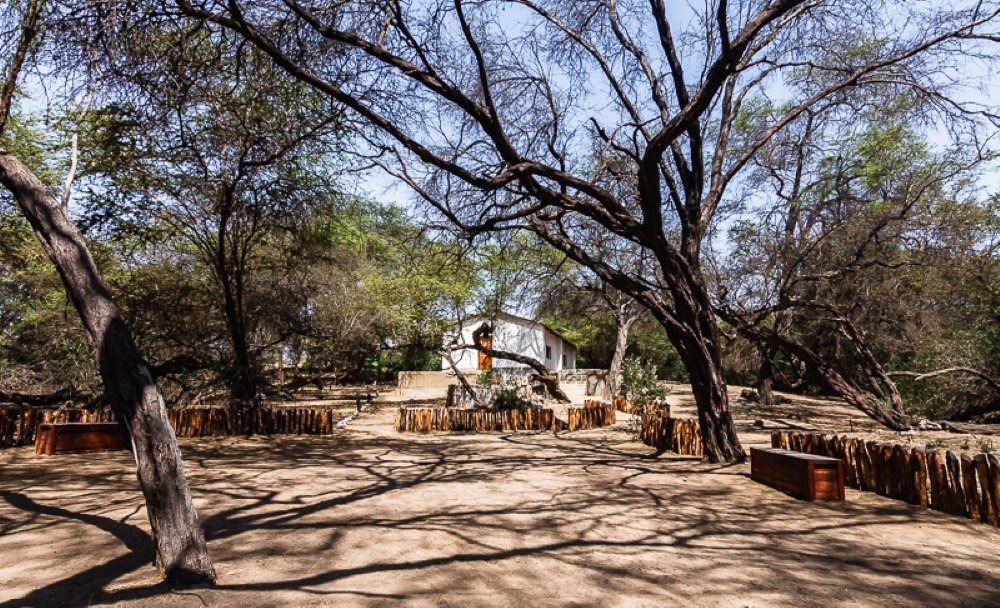Pómac Forest Historic Sanctuary
The Bosque de Pomac Historic Sanctuary is located in the Lambayeque region, in northern Peru. More specifically, it is located in the district of Pitipo, province of Ferreñafe. This area is approximately 30 kilometers southeast of the city of Chiclayo, the capital of the Lambayeque region.
This area also has significant historical importance. Within the sanctuary is the Batán Grande Archeological Zone, which was the capital of the Lambayeque lordship, an ancient pre-Columbian civilization that thrived in the region between the eighth and fourteenth centuries A.D. Visitors can explore the pyramids, tombs and other archaeological remains that bear witness to the region’s rich history.
History
The Historic Sanctuary of Bosque de Pómac has a history that spans from ancient times to the present day. Here’s a summary:
- Pre-Columbian Era
The area of Bosque de Pómac was inhabited by various pre-Columbian cultures, with one of the most prominent being the Lambayeque or Sicán civilization. This culture flourished in the region between the 8th and 14th centuries AD and left behind significant archaeological remains in the area. At the archaeological site of Batán Grande, within the sanctuary, visitors can find pyramids, tombs, and other vestiges of this ancient civilization.
- Spanish Colonization
With the arrival of the Spanish to the region in the 16th century, the area became part of the Viceroyalty of Peru. During this period, significant changes occurred in the local society and economy, but Bosque de Pómac remained an important natural area.
-
19th and 20th Centuries
During the 19th and 20th centuries, the area underwent various human interventions, such as logging and agriculture. This led to a considerable decrease in the original forest cover of the dry tropical forest.
- Creation of the Historic Sanctuary
In 2001, the Peruvian government created the Historic Sanctuary of Bosque de Pómac with the aim of protecting and conserving both the biodiversity of the dry tropical forest and the important archaeological sites within its territory.
- Conservation and Tourism
Since its creation, the sanctuary has been the focus of conservation and management efforts to protect its biodiversity and cultural heritage. Additionally, sustainable tourism has been promoted in the area, allowing visitors to enjoy the nature and history of the place responsibly.
In summary, the Historic Sanctuary of Bosque de Pómac has a history that spans from ancient times, with the presence of pre-Columbian civilizations, to the present day, where efforts are made to conserve its biodiversity and cultural heritage for future generations.

What do we find in the Pomac Historic Sanctuary?
In the Historic Sanctuary of Bosque de Pómac, visitors can find a variety of natural and cultural attractions:
- Biodiversity: The sanctuary harbors a diversity of flora and fauna adapted to the unique ecosystem of the dry tropical forest. Among the tree species present are carob, algarrobo, huarango, and zapote. Additionally, it is home to a variety of birds, mammals, and reptiles, some of which are endemic to the region.
- Archaeological Sites: One of the highlights of the sanctuary is the presence of important archaeological sites belonging to the Lambayeque or Sicán civilization. In the Archaeological Zone of Batán Grande, visitors can explore pyramids, tombs, canals, and other archaeological remains that testify to the glorious past of this ancient civilization.
- Interpretation Center: The sanctuary features an Interpretation Center that provides detailed information about the history, flora, fauna, and cultural significance of Bosque de Pómac. Visitors can learn about the relationship between pre-Columbian cultures and the natural environment of the area.
- Hiking and Birdwatching: Guided hiking trails are offered through the forest, allowing visitors to enjoy nature and observe the diversity of birds and other animal species present in the sanctuary.
- Responsible Tourism: The sanctuary promotes sustainable and responsible tourism, aiming to preserve the fragile ecosystem and protect archaeological sites from potential damage.
In summary, the Historic Sanctuary of Bosque de Pómac offers a unique experience that combines the natural beauty of the dry tropical forest with the cultural richness of its archaeological sites, providing visitors with the opportunity to explore and learn about the history and biodiversity of the region.
How do we get to the Pomac Historic Sanctuary?
To reach the Historic Sanctuary of Bosque de Pómac, you can follow these steps:
- Travel to Chiclayo: The nearest city to the sanctuary is Chiclayo, which is the capital of the Lambayeque region in northern Peru. You can reach Chiclayo by plane from Lima or other major cities in the country, or by bus from various Peruvian cities.
- Transportation from Chiclayo to the Sanctuary: Once in Chiclayo, there are several options to reach the Historic Sanctuary of Bosque de Pómac:
- Bus: You can take public buses or hire tourist transportation services to take you from Chiclayo to the sanctuary. Buses usually depart from the Chiclayo bus terminal.
- Taxis or Private Services: You can also choose to hire a taxi or a private transportation service to take you directly to the sanctuary. Make sure to agree on the price with the driver before starting the journey.
- Access to the Sanctuary: Once in the sanctuary area, you can enter through the designated access point. There, you may need to pay an entrance fee, which is usually nominal and contributes to the maintenance and conservation of the protected area.
- Explore the Sanctuary: Once inside the sanctuary, you can enjoy various activities and attractions, such as hiking along natural trails, visiting archaeological sites, birdwatching, and more.
It’s advisable to inquire in advance about visiting hours, access conditions, and any other relevant information, especially if you’re planning a guided tour or wish to participate in specific activities within the sanctuary.

Recommendation to visit the Pomac forest
If you’re planning to visit Bosque de Pómac, here are some recommendations:
- Research and Plan: Before your trip, research the Historic Sanctuary of Bosque de Pómac to familiarize yourself with its attractions, rules, and regulations. Plan your visit in advance, including how to get there, what to bring, and how much time you’ll spend there.
- Dress Appropriately: The climate in the region can be hot and dry, so make sure to wear lightweight clothing, a hat, sunscreen, and insect repellent. It’s also advisable to bring drinking water and some snacks to stay hydrated and energized during your visit.
- Respect the Environment: Remember that you’re visiting a natural and archaeological sanctuary, so respect the environment and follow the rules set by the authorities. Don’t leave trash behind, don’t damage the flora or fauna, and stay on designated trails.
- Explore the Archaeological Sites: Don’t miss the opportunity to explore the archaeological sites within the sanctuary, such as the Batán Grande Archaeological Zone. Hiring a tour guide can be an excellent way to learn more about the history and culture of the region.
- Enjoy Nature: In addition to its archaeological richness, Bosque de Pómac offers unique natural beauty. Take the time to enjoy the biodiversity of the dry tropical forest and participate in activities such as hiking and birdwatching.
- Support Responsible Tourism: Contribute to the conservation of the sanctuary by supporting responsible tourism. Choose tour operators and services that promote sustainable and environmentally friendly practices, as well as benefit the local community.
By following these recommendations, you’ll be well-prepared to make the most of your visit to the Historic Sanctuary of Bosque de Pómac while contributing to its preservation for future generations.












